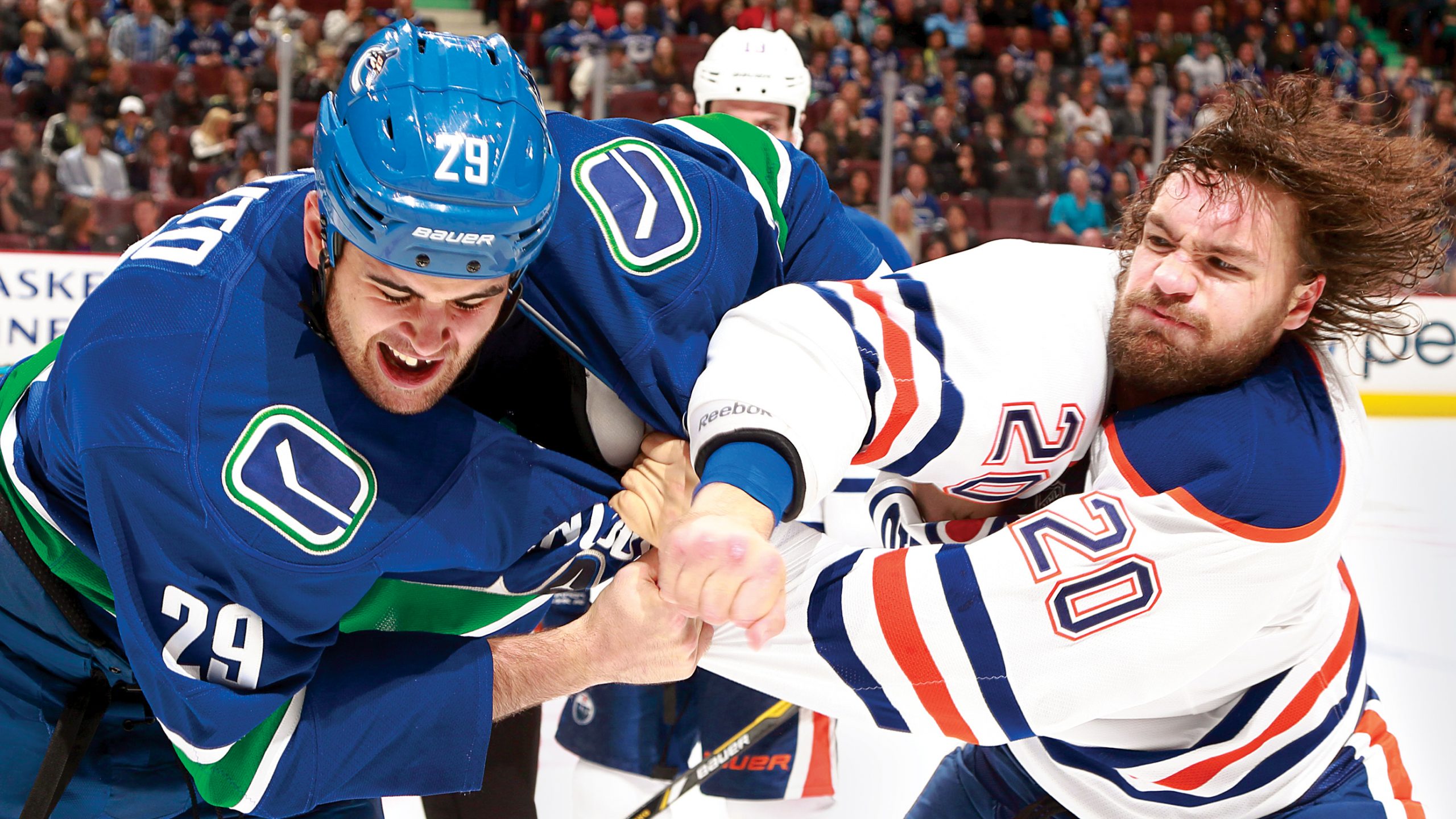You can attempt to make hockey safer, to make fights less frequent. But don’t ever expect them to go away. They won’t.
It didn’t even take a full game for the NHL to welcome its first controversy of the new season—one as old as the sport itself. When Montreal bruiser George Parros landed chin-first after losing his balance in a fight with Maple Leafs enforcer Colton Orr, he was knocked unconscious, taken off on a stretcher and diagnosed with a concussion. The outrage and debate began: Should fighting be allowed in the NHL?
The simple answer remains: Yes.
What happened to Parros was unfortunate, but regardless of the injury risk and increased awareness and concerns surrounding concussions, fighting in the NHL isn’t going away. The question of whether it is properly penalized may be addressed, but not whether it belongs. There simply isn’t a mass appetite for removing it.
True, there is a faction of GMs who have raised the idea of attaching a game misconduct to the five-minute fighting major, but that group is small. And there are so many different circumstances that inspire a fight that it makes it more difficult a change to make than you might think.
Even Prime Minister Stephen Harper, speaking from the hockey hotbed of Bali, Indonesia, weighed in. “I do think that authorities have historically not taken their responsibility to try and keep the rough, tough part of the game within the rules,” he said. “I particularly worry about the head-shot phenomenon . . . [but] there has never been an era in hockey, from the very beginning, where violence was not an issue of controversy.” A hockey historian of sorts, the PM is right with his last thought. Violence has always been part of the game.
Over the years, the league has made changes to its rules that have impacted fighting. Gone are the days of bench-clearing brawls. They instituted the instigator penalty. Now players can’t remove their helmets without further punishment. The list goes on. But the league has never done enough to appease those who want fighting removed from the game entirely. And that won’t happen.
Fighting serves a purpose. It’s a release valve for emotions and it polices the action on the ice. Staged fights might be a waste of time, but they are becoming more rare. The Parros-Orr fight was not staged;
it was the result of Canadiens defenceman P.K. Subban getting involved with Orr, and Parros doing what he is supposed to do: protect his star teammate.
Fighting is part of the NHL game’s culture—the key point there is “NHL.” It isn’t allowed in minor hockey, or college hockey, and junior hockey now has a limit on the number of fights a player can have in a season. But the NHL is in the entertainment business, and all you have to do is play a video game or watch a promotion for the league and the “violent” side of the game is a big part of it. It sells with a lot of fans.
Remember, too, that the NHL doesn’t allow fighting. That infraction, like any other—be it slashing, roughing and high-sticking—is penalized.
The question is: Should there be stiffer punishment than a five-minute major and the occasional misconduct?
That’s what the GMs will ask when they next meet, not whether fighting belongs.
People will argue that you seldom have fights in the playoffs. But there is a reason for that—the stakes are so much higher that players can’t afford a bad penalty taken while trying to ignite a scrap.
The bottom line is the players don’t want to eliminate fighting, and most fans agree. Remember the old line: If they don’t stop fighting in hockey, we’re going to have to build bigger arenas. It’s true, and it’s a big reason why the NHL will always fight to keep it in their game.
This story originally appeared in Sportsnet magazine. Subscribe here.


